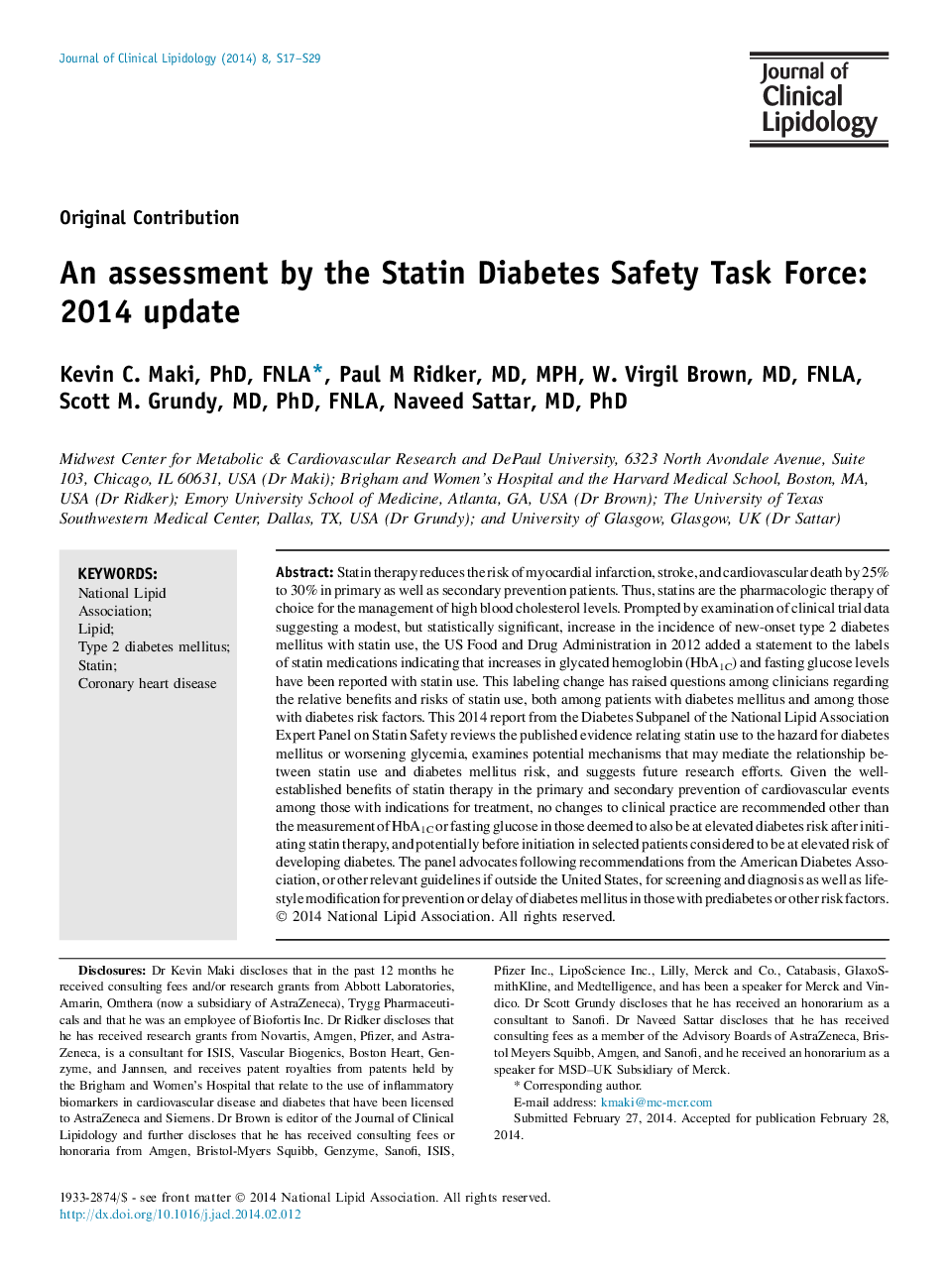| کد مقاله | کد نشریه | سال انتشار | مقاله انگلیسی | نسخه تمام متن |
|---|---|---|---|---|
| 2966164 | 1178795 | 2014 | 13 صفحه PDF | دانلود رایگان |
► Statin use is associated with a modest, but statistically significant, overall increase in the odds for new-onset diabetes (∼10% compared with placebo or usual care). Intensive-dose statin therapy is associated with an increase in risk for new-onset diabetes of ∼12% compared with standard dose statin therapy.
► Statin therapy is effective for reducing major cardiovascular event rates in patients at lower and higher risk for diabetes as well as among those with prevalent diabetes, in both primary and secondary prevention. Randomized trial data indicate that several major cardiovascular events are prevented for each excess case of diabetes associated with statin use.
► Statins should continue to be recommended for reducing cardiovascular disease event risk in appropriate patients with and without diabetes or risk factors for diabetes.
► Lifestyle modification should be emphasized to all patients recommended for statin therapy to help lessen not only their cardiovascular risk, but also to attenuate any modest increase in diabetes risk.
Statin therapy reduces the risk of myocardial infarction, stroke, and cardiovascular death by 25% to 30% in primary as well as secondary prevention patients. Thus, statins are the pharmacologic therapy of choice for the management of high blood cholesterol levels. Prompted by examination of clinical trial data suggesting a modest, but statistically significant, increase in the incidence of new-onset type 2 diabetes mellitus with statin use, the US Food and Drug Administration in 2012 added a statement to the labels of statin medications indicating that increases in glycated hemoglobin (HbA1C) and fasting glucose levels have been reported with statin use. This labeling change has raised questions among clinicians regarding the relative benefits and risks of statin use, both among patients with diabetes mellitus and among those with diabetes risk factors. This 2014 report from the Diabetes Subpanel of the National Lipid Association Expert Panel on Statin Safety reviews the published evidence relating statin use to the hazard for diabetes mellitus or worsening glycemia, examines potential mechanisms that may mediate the relationship between statin use and diabetes mellitus risk, and suggests future research efforts. Given the well-established benefits of statin therapy in the primary and secondary prevention of cardiovascular events among those with indications for treatment, no changes to clinical practice are recommended other than the measurement of HbA1C or fasting glucose in those deemed to also be at elevated diabetes risk after initiating statin therapy, and potentially before initiation in selected patients considered to be at elevated risk of developing diabetes. The panel advocates following recommendations from the American Diabetes Association, or other relevant guidelines if outside the United States, for screening and diagnosis as well as lifestyle modification for prevention or delay of diabetes mellitus in those with prediabetes or other risk factors.
Journal: Journal of Clinical Lipidology - Volume 8, Issue 3, Supplement, May–June 2014, Pages S17–S29
